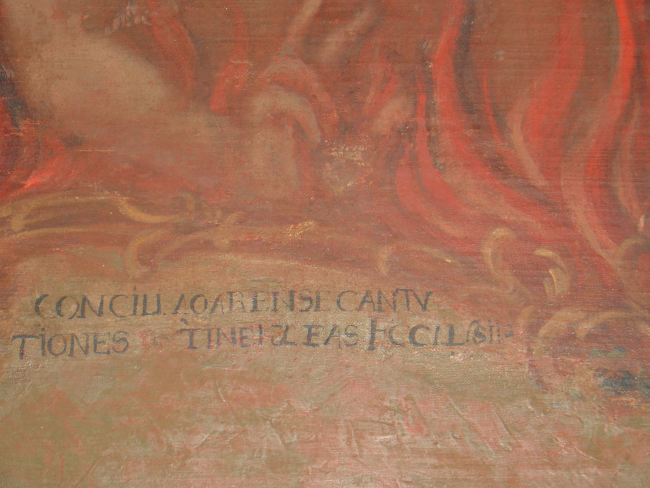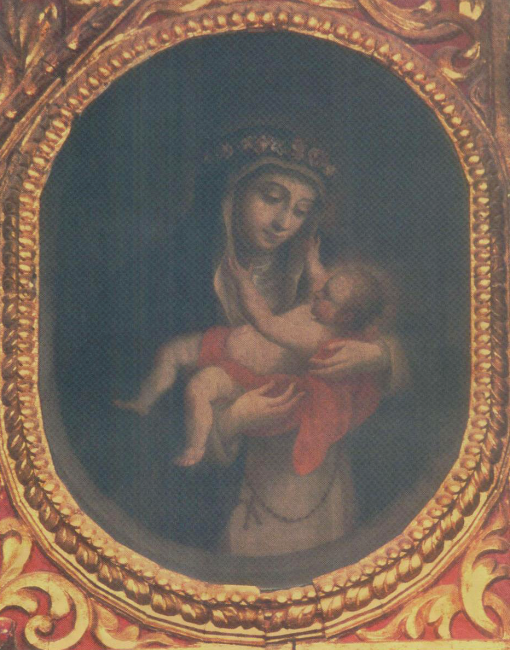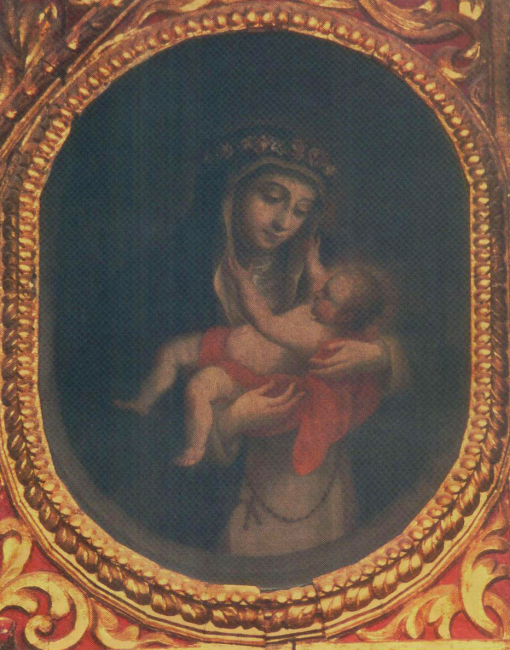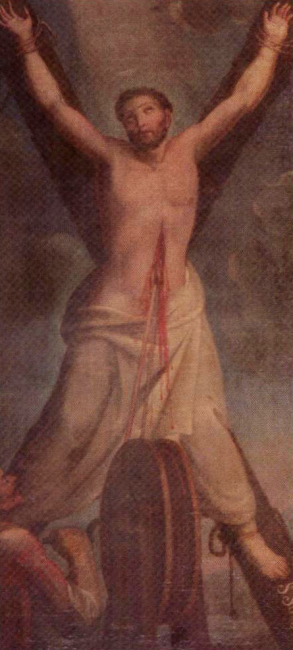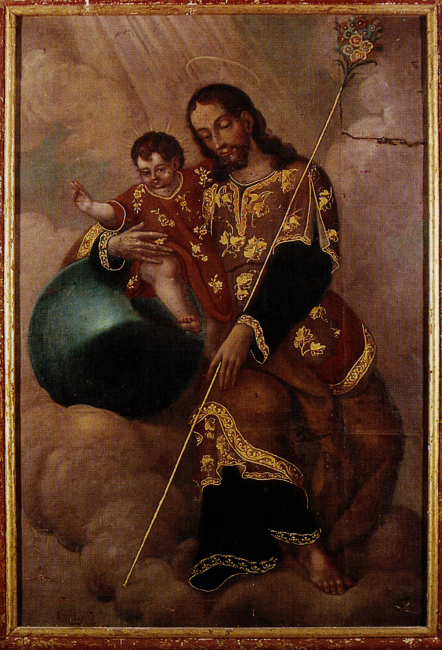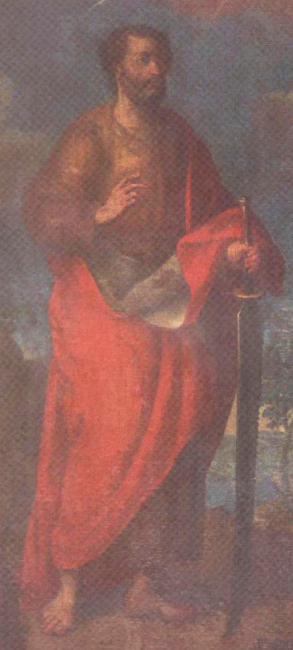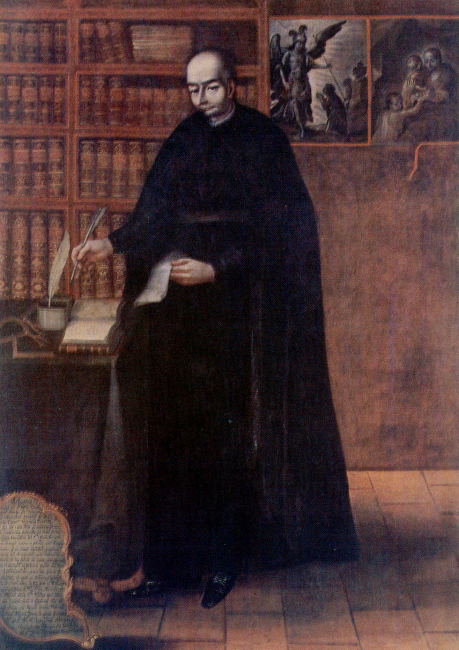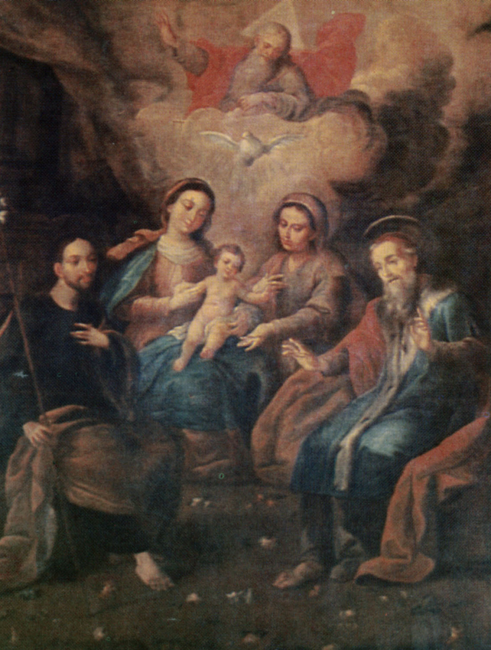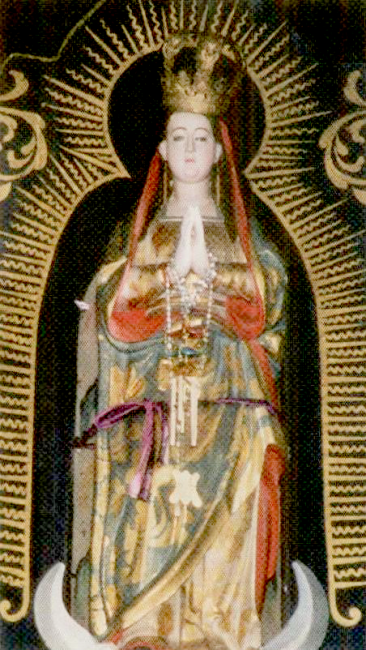In the strictly visual arts, and specifically in relation to painting, Comayagua developed a policy that Doña Leticia de Oyuela defined as the "purchase" of cultural goods because many of the works for their invoice denote that they are imported, this is explained by the fact that much of this artistic production was donated by individuals, some of them are magnificent copies and others, fortunate inventions of local painters.
The painting of "evangelization" was central to the period, this type of painting corresponds to the late sixteenth, seventeenth and even eighteenth century developed in remote and extremely poor areas. Its main approach is communication of a biblical message; its elaboration is simple, many of these paintings made on board do not require previous preparation, its importance lies in the effectiveness of the message to be transmitted. An example of this painting is the canvas of "La Santisima Trinidad", located in the Museum of Religious Art of Comayagua; it shows the identity of the three divine people in white, red and blue, with the corresponding symbologies that speak of the pre-Columbian world such as the sun, the lamb and the palms.
Painters who leave legacy in colonial times, among them: Jose Miguel Gomes, is the artist who defines the artistic style of the colonial period, whose importance besides its aesthetic production lies in being the mediator between two periods and the two cultural centers of the moment: Comayagua and Tegucigalpa, since it moved in these environments.
There are many of his works, some of them and his best known paintings are: his collection of four canvases of San Jose, the last of them, "San Jose de Calasanz", another important work made by Gomes in Comayagua is "La Divina Pastora", the large canvas of an image of Jesus Nazareno, the "Sacred Heart of Jesus" and "The Virgin of the Sacred Heart".
Other colonial painters, which cannot fail to mention: Blas de Mefa (Meza), Guatemalan painter although all his work is in Honduras, so it can be considered Honduran, the paintings (canvases on wood) executed in two altarpieces in the Church of Los Dolores in Tegucigalpa and the main altarpiece of the Church of Santa Ana de Ojojona. This painter worked between 1714 and 1741.
Another important painter of the time is Zepeda and Qubas, the first is the work of "San Miguel Arcangel" which is in the Church San Francisco, and the second contemporary of Miguel Gomes and which can be admired some canvases in the Cathedral of Tegucigalpa.
